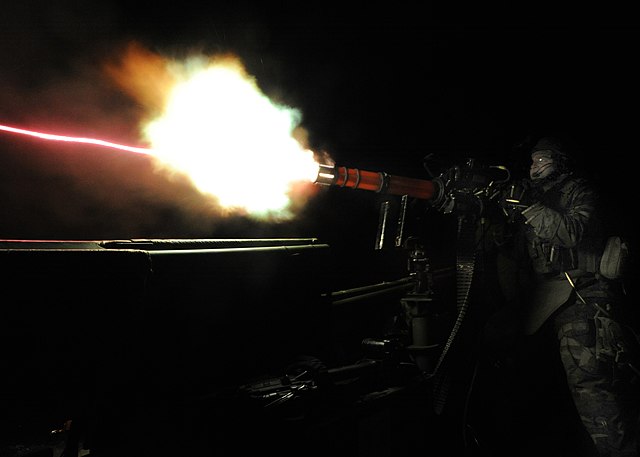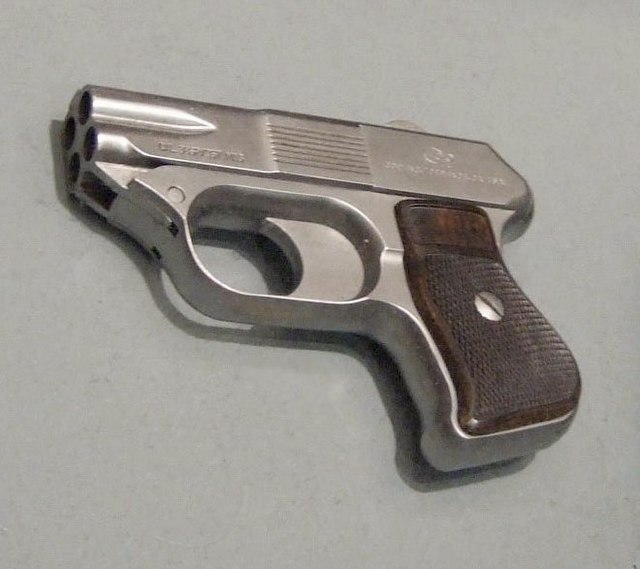A rotary cannon, rotary autocannon, rotary gun or Gatling cannon, is any large-caliber multiple-barreled automatic firearm that uses a Gatling-type rotating barrel assembly to deliver a sustained saturational direct fire at much greater rates of fire than single-barreled autocannons of the same caliber. The loading, firing and ejection functions are performed simultaneously in different barrels as the whole assembly rotates, and the rotation also permits the barrels some time to cool. Rotary cannons, external or self-driven are used in aircraft over reciprocating bolt autocannons which are more prone to jamming in high g environments. The rotating barrels on nearly all modern Gatling-type guns are powered by an external force such as an electric motor, although internally powered gas-operated versions have also been developed.
The GAU-8 Avenger seven-barrelled 30 mm rotary cannon of an A-10 Thunderbolt II
Four Soviet/Russian rotary cannons arranged in ascending caliber, from the left: GShG-7.62, GSh-6-23, GSh-6-30, AK-630
Barrel heating in a 7.62mm NATO GAU-17
GShG-7.62, one of the few self-driven Gatlings.
A multiple-barrel firearm is any type of firearm with more than one gun barrel, usually to increase the rate of fire or hit probability and to reduce barrel erosion or overheating.
A U.S. Air Force rotary-wing crewman fires a Minigun during the Vietnam War.
The mitrailleuse, a 19th-century volley gun
COP .357 Magnum derringer
Confederate cavalryman with a side-by-side double-barreled shotgun








